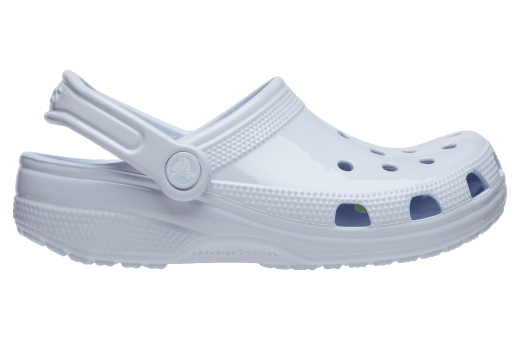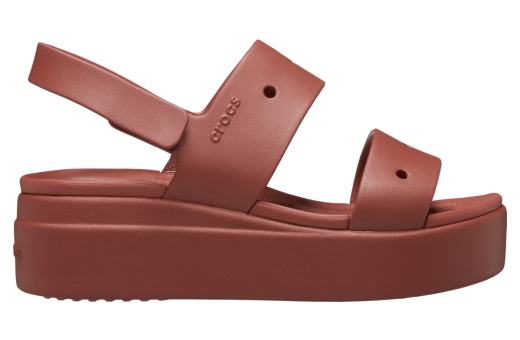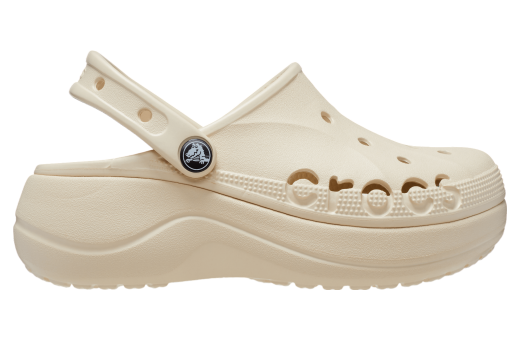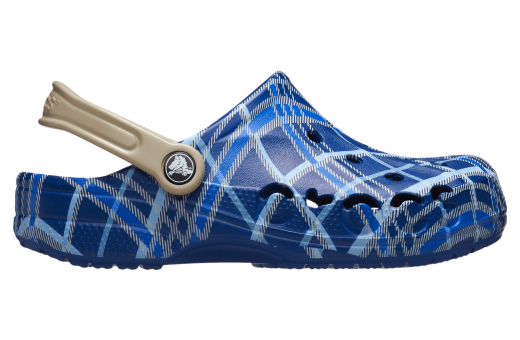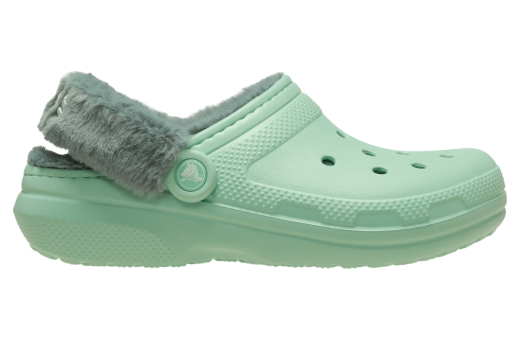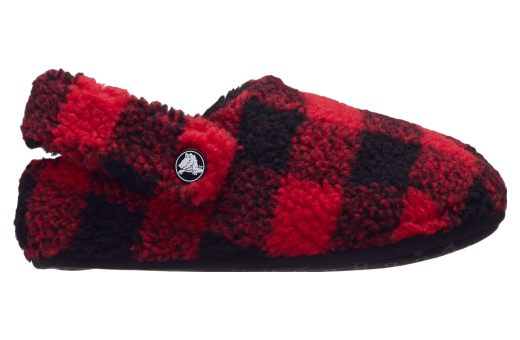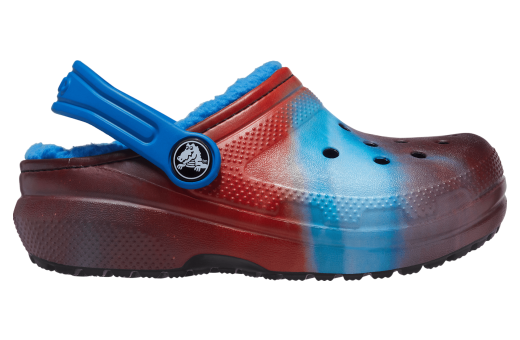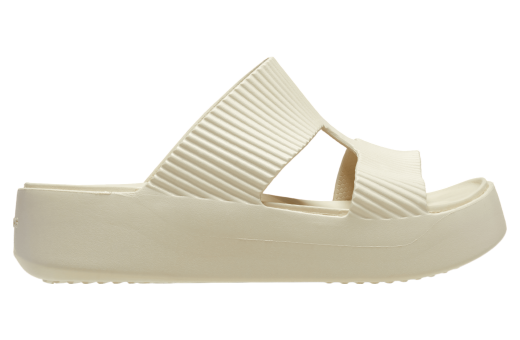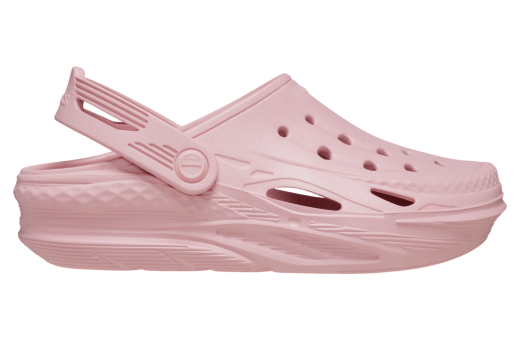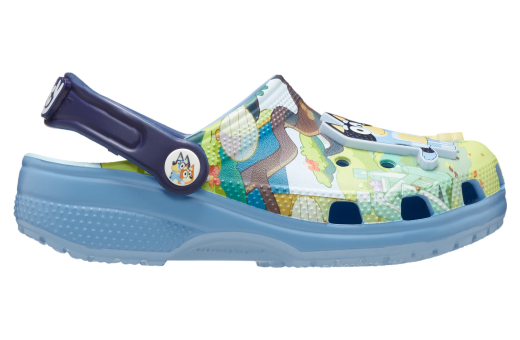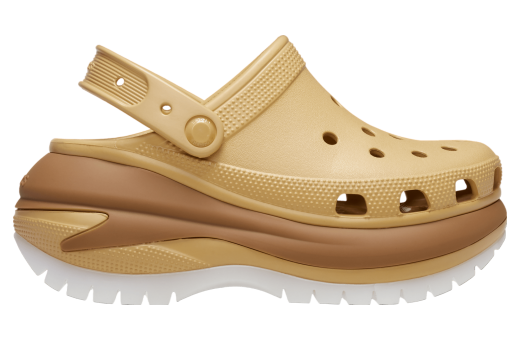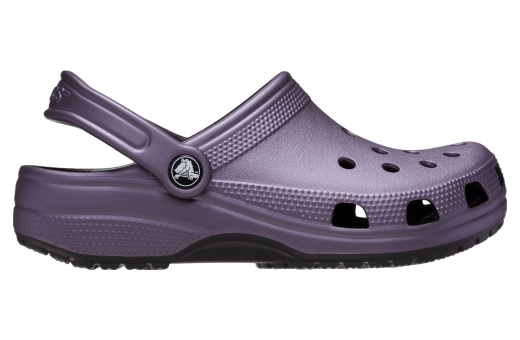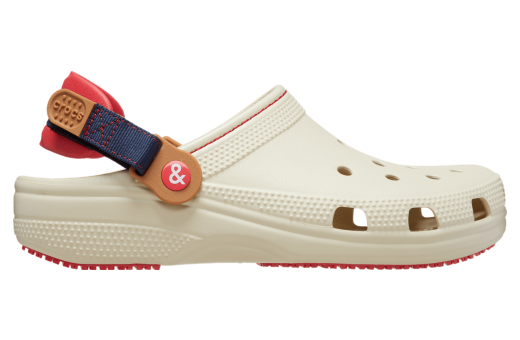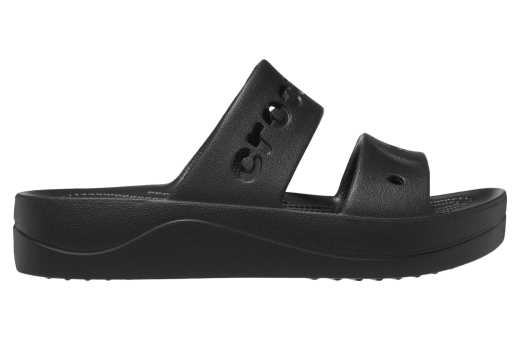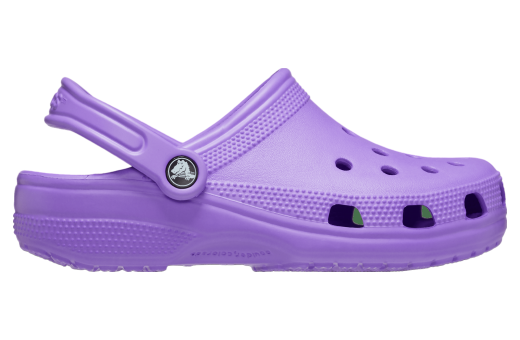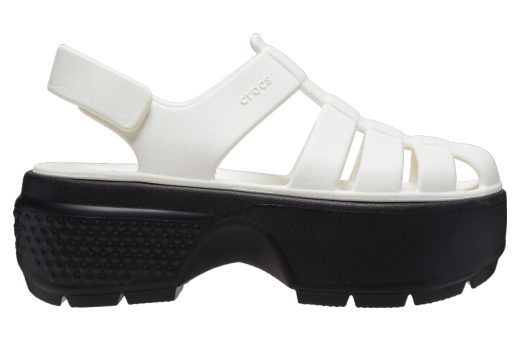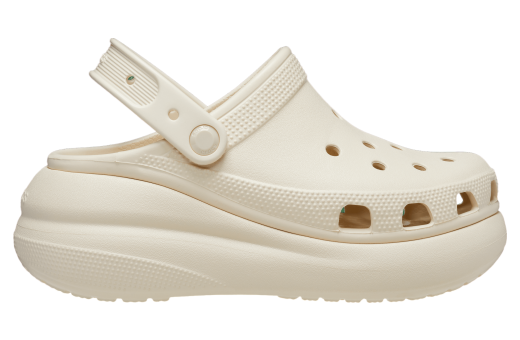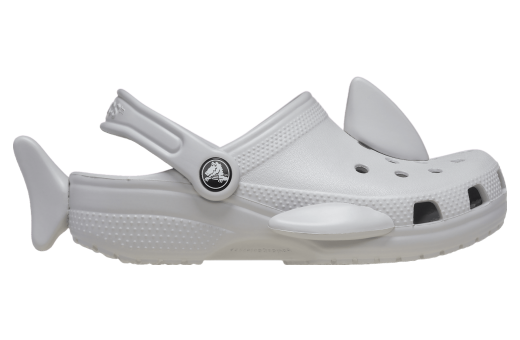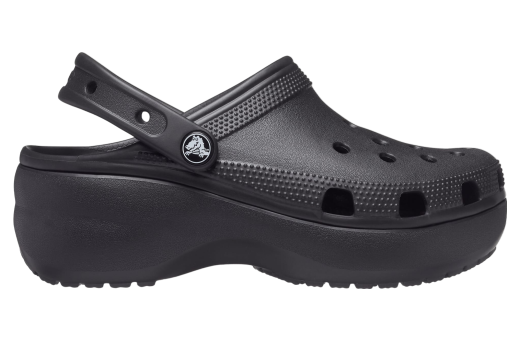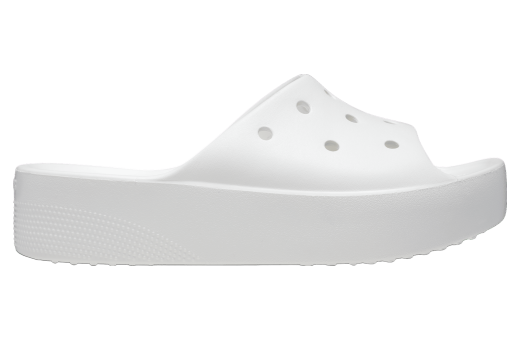Crocs
Crocs, the American brand of foam clogs known for their distinctive appearance and lightweight comfort, have become a global footwear phenomenon since their introduction in 2002. Originally designed as a boating shoe, Crocs are made from a patented closed-cell resin called Croslite, which provides extraordinary comfort due to its soft, cushiony nature. The design of Crocs features a wide, perforated upper and an adjustable heel strap, making them both breathable and versatile. Although initially met with mixed reactions due to their unconventional look, these shoes have gained a broad fan base and have been embraced by individuals of all ages, from children to medical professionals to casual users.
Over the years, Crocs have expanded their product line to include a variety of styles, from flip-flops to winter boots, without straying from their core focus on comfort and durability. The company has also engaged in numerous collaborations with high-profile designers and brands, resulting in limited edition releases that blend the practicality of Crocs with cutting-edge fashion. Despite their utilitarian origins, Crocs have found a place in contemporary style, often celebrated for their unapologetic design and bold colors. The brand's ability to consistently innovate while maintaining their signature comfort has contributed to their lasting success in the ever-evolving footwear industry.
History of Crocs
The Birth of a Unique Footwear Phenomenon (2002-2003)
In the early 2000s, a simple yet revolutionary concept was born during a sailing trip in the Caribbean. Scott Seamans, Lyndon "Duke" Hanson, and George Boedecker Jr. were friends with a shared interest in boating. They stumbled upon a foam clog designed by a Canadian company called Foam Creations. Intrigued by its lightweight design, non-slip nature, and comfort, the trio saw the potential for a broader application beyond boating.
By 2002, Seamans, Hanson, and Boedecker had acquired the rights to the foam clog and began creating their version. They founded Crocs, Inc. later that year and started developing what would become one of the most iconic and polarizing footwear designs in modern history: the Croc clog.
The first-ever Crocs model, called the Beach, made its debut at the Fort Lauderdale Boat Show in November 2002. The initial reaction was overwhelmingly positive; 200 pairs sold out almost immediately. This early success illustrated not only the product's practicality but also its market potential.
Rapid Growth and Diversification (2004-2006)
Fueled by early success, Crocs embarked on an aggressive growth trajectory. By 2004, Crocs had expanded operations and opened new manufacturing facilities to meet the surging demand. They also started incorporating distinctive color options, which further captured consumer interest.
The company’s innovative use of closed-cell resin, branded as Croslite, was pivotal to its growth. This proprietary material was anti-microbial, odor-resistant, cushioning, and water-friendly, setting Crocs apart from traditional footwear. Croslite's benefits made Crocs desirable in various settings — from casual and medical to workplace and outdoor.
In 2006, Crocs went public, debuting on the NASDAQ stock exchange under the ticker symbol CROX. The IPO was a smashing success, raising nearly $208 million and cementing Crocs' status as a major player in the global footwear industry.
Mainstream Success Amidst Polarizing Opinions (2007-2011)
Crocs' unprecedented success was a double-edged sword. While the shoes had a strong following thanks to their comfort and practicality, they also faced significant criticism for their unconventional appearance. Fashion pundits and traditionalists labeled them ugly and inappropriate for formal settings.
Despite the criticism, Crocs diversified its product line to include more than just clogs. They introduced sandals, sneakers, boots, and accessories, hoping to appeal to a wider audience. The introduction of Crocs Mammoth, a clog with a fleece lining, brought seasonal versatility to the product line.
Efforts to diversify were accompanied by collaborations with fashion brands and designers. In 2008, Crocs partnered with Balenciaga, a high-fashion house, for a limited edition clog featuring platform soles and embellishments. This collaboration polarized opinions even further, but it proved that Crocs could make inroads into high fashion.
Financial Turbulence and Restructuring (2008-2010)
The late 2000s were not without challenges. The global financial crisis of 2008 profoundly affected consumer spending, dramatically shrinking the company’s revenue. Crocs found itself with excessive inventory and a declining stock price. By 2009, the company reported significant losses, resulting in the closure of manufacturing facilities and layoffs.
To stabilize, Crocs underwent a strategic restructuring. John Duerden was appointed CEO in 2009, bringing significant experience in corporate turnaround. Duerden initiated cost-cutting measures, optimized supply chains, and narrowed the product focus back to best-sellers. These efforts started showing results, and by 2010, Crocs was back in profitability.
Reinvention and Collaboration (2011-2016)
Reinvention was crucial for the brand’s survival and growth into the 2010s. Crocs gradually reintroduced diversifications, focusing on quality and design. New product lines targeting different demographics, including children and medical professionals, were rolled out. The company also paid attention to seasonal demands, offering winter-appropriate footwear alongside its classic summer collection.
Collaborations continued to be a part of Crocs’ strategy. The partnership with popular brands and figures, including Post Malone and designer Christopher Kane, brought a fresh wave of attention and credibility. Such collaborations also helped Crocs shed some of its 'ugly' reputation, proving they could coexist in high-fashion contexts.
In 2014, Crocs celebrated a significant milestone by selling its 300 millionth pair of shoes. This accomplishment underscored the brand's global appeal and resilience.
The Resurgence and Embrace of Uniqueness (2017-Present)
The latter part of the 2010s and early 2020s marked a significant resurgence for Crocs. The company placed a renewed emphasis on its unique identity, unapologetically embracing the distinctive look that initially drew both fans and critics.
In 2017, Andrew Rees took over as CEO, steering the brand through a pivotal period. Under his leadership, Crocs undertook numerous marketing campaigns highlighting their unique appeal, focusing on themes of individuality and self-expression. The "Come As You Are" campaign featured celebrities and influencers proudly showcasing their Crocs, reinforcing the brand’s message of comfort and versatility.
The digitization of retail also benefited Crocs. Ecommerce and digital marketing became central to their strategy, making it easier for consumers worldwide to engage with the brand. Social media platforms, particularly Instagram and TikTok, played a vital role in connecting with younger generations and driving trends.
Collaborations reached new heights, with limited-edition releases often selling out within hours. High-profile partnerships with artists like Bad Bunny and Justin Bieber brought Crocs into the contemporary cultural zeitgeist. Jibbitz, the customizable charms for Crocs, became a massive hit, enhancing the personalization aspect and making the shoes even more appealing to a socially expressive audience.
Navigating Through the COVID-19 Pandemic
During the COVID-19 pandemic, Crocs saw an unexpected boost in popularity. As people around the world shifted to remote work and sought comfort in their home environments, Crocs' reputation as comfortable, easy-to-wear footwear worked in its favor. The company adapted quickly, not only ramping up online sales efforts but also contributing to pandemic relief by donating thousands of pairs to healthcare workers.
In 2020, Crocs reported record revenues, a testament to the brand's enduring appeal and adaptability.
The Future of Crocs
Looking ahead, Crocs seems poised to continue its upward trajectory. The brand's commitment to sustainability is becoming more apparent, with initiatives to use eco-friendly materials and reduce carbon footprints. Innovations in design and material science promise future versions that will be even more practical and comfortable.
Crocs' embrace of digital marketing, influencer culture, and adaptive retail strategies indicate a forward-thinking approach designed to meet the needs and preferences of future consumers. As they continue to navigate the ever-changing fashion landscape, Crocs aims to maintain a balance between their iconic identity and evolving consumer demands.
Conclusion
From a humble boating innovation to a global fashion icon, Crocs’ journey is a testament to entrepreneurial vision, adaptability, and the power of embracing uniqueness. Despite polarizing opinions, Crocs has managed to carve out a distinctive niche in the competitive footwear market, consistently evolving and expanding its appeal. As they look to the future, the iconic brand appears well-equipped to continue making waves in both fashion and functional footwear.

